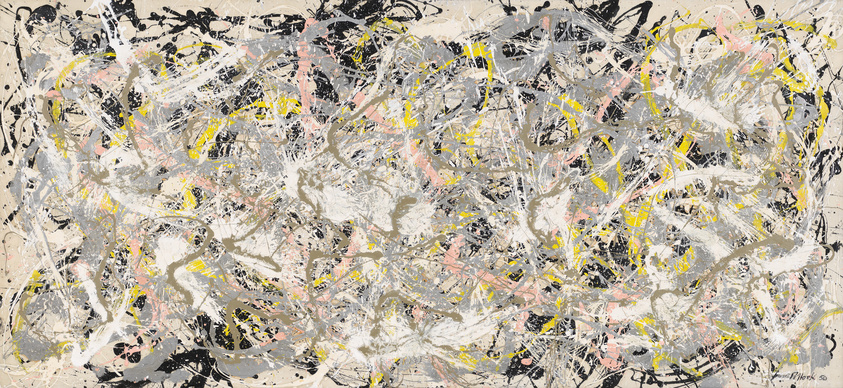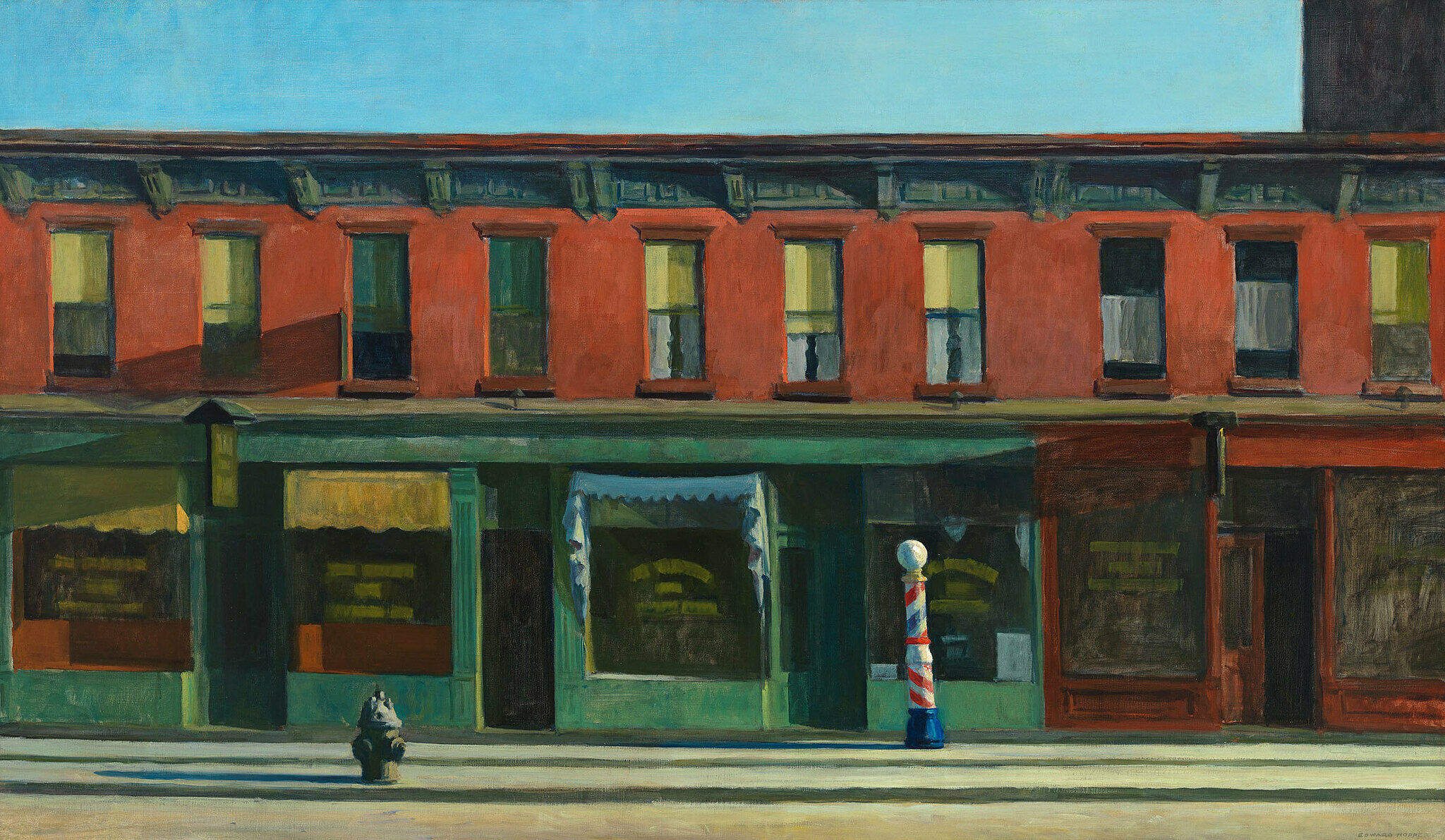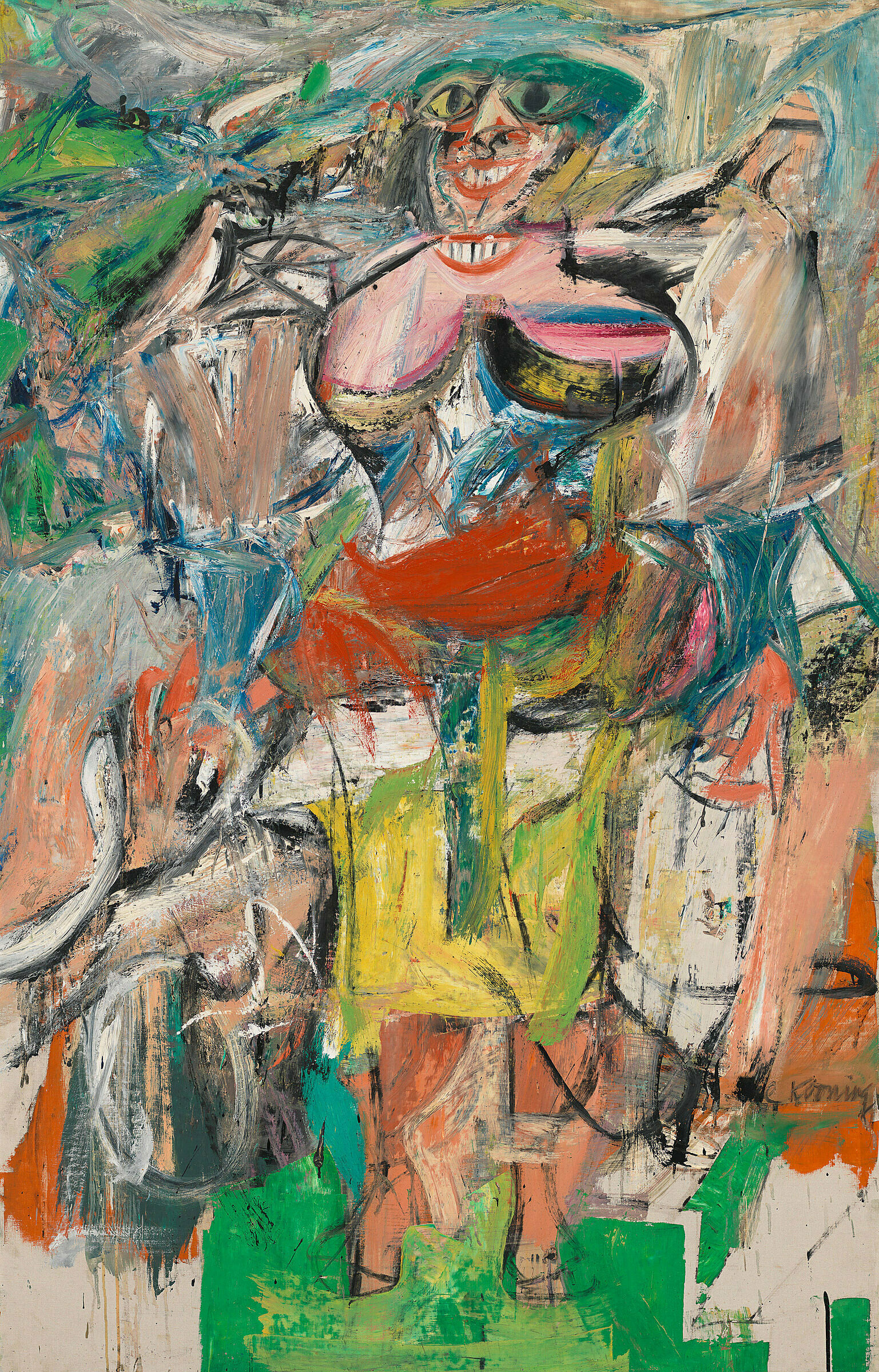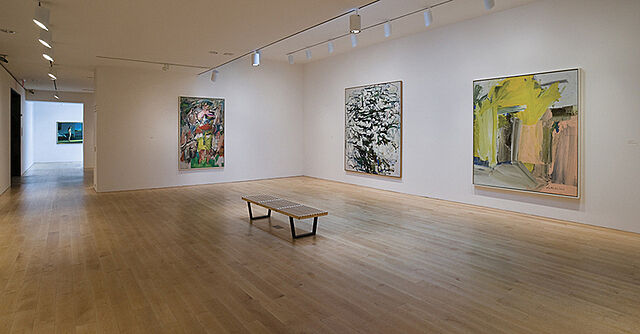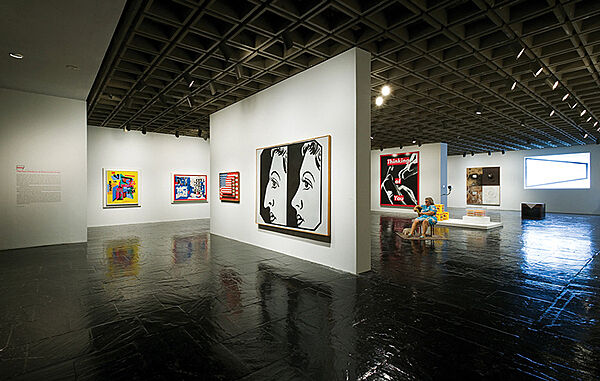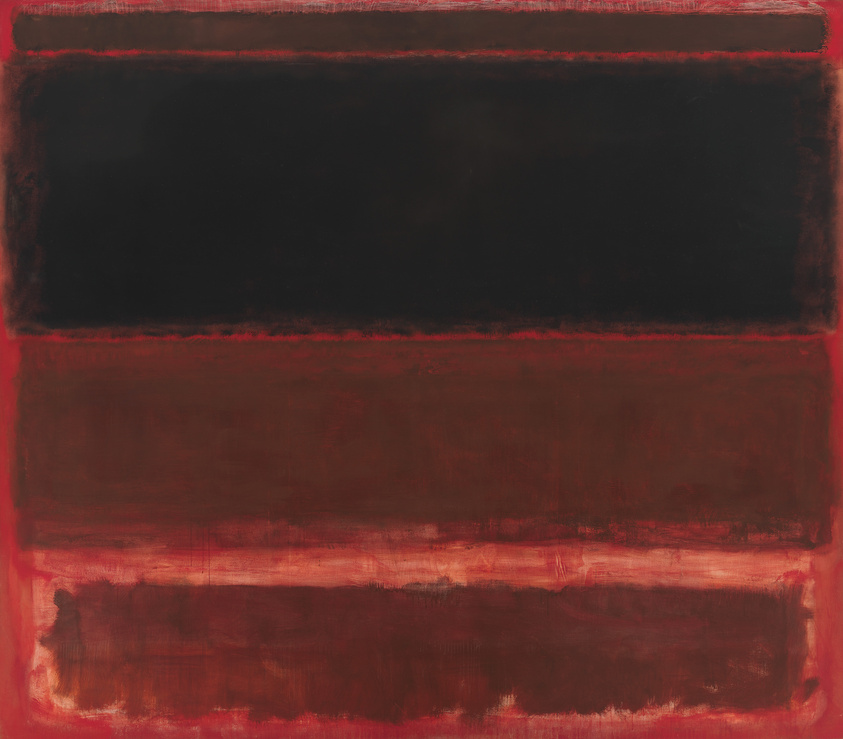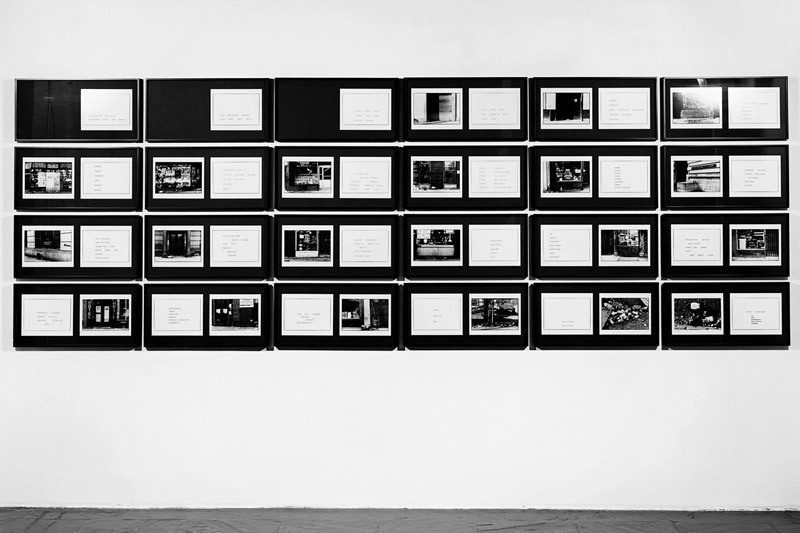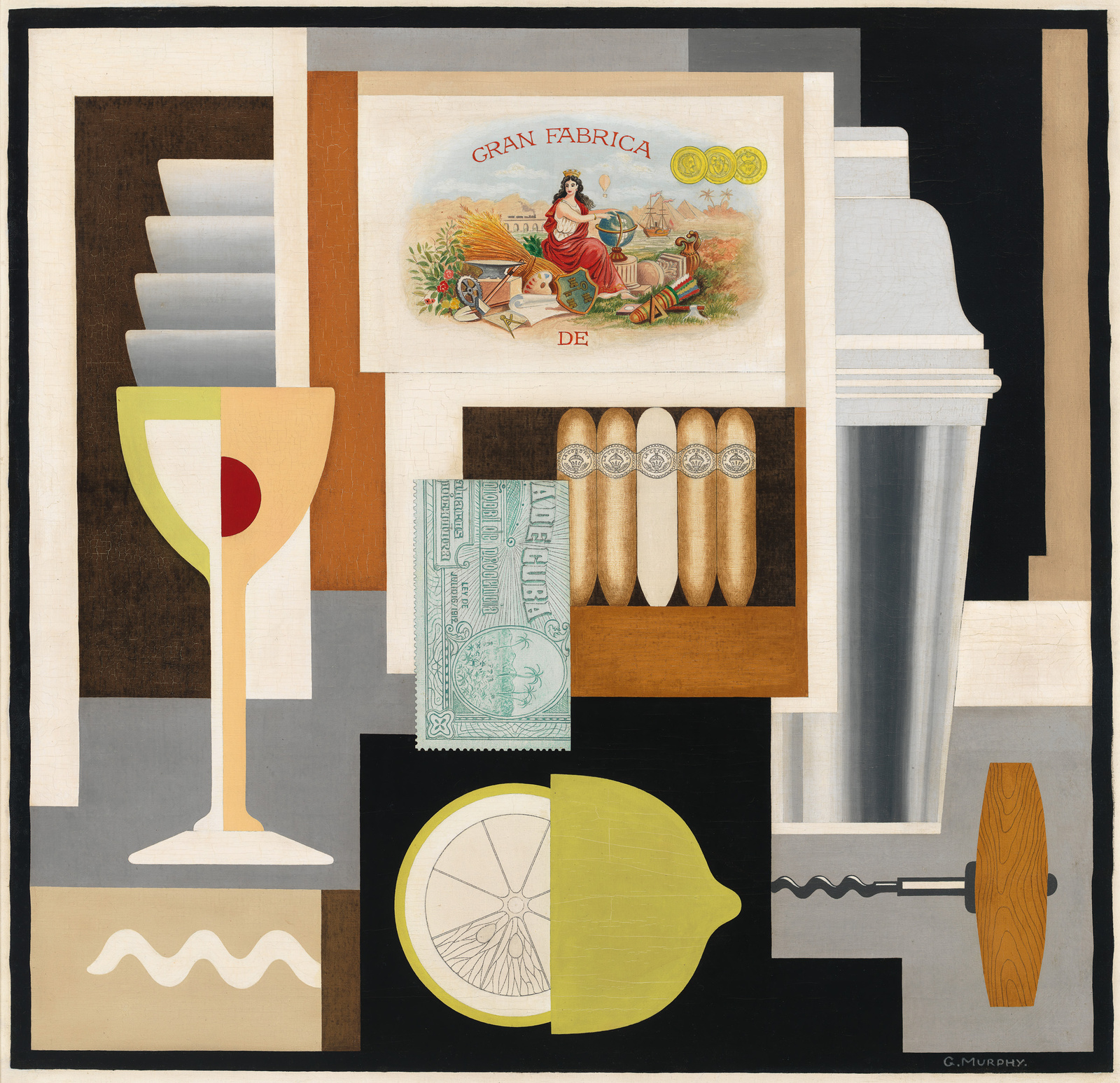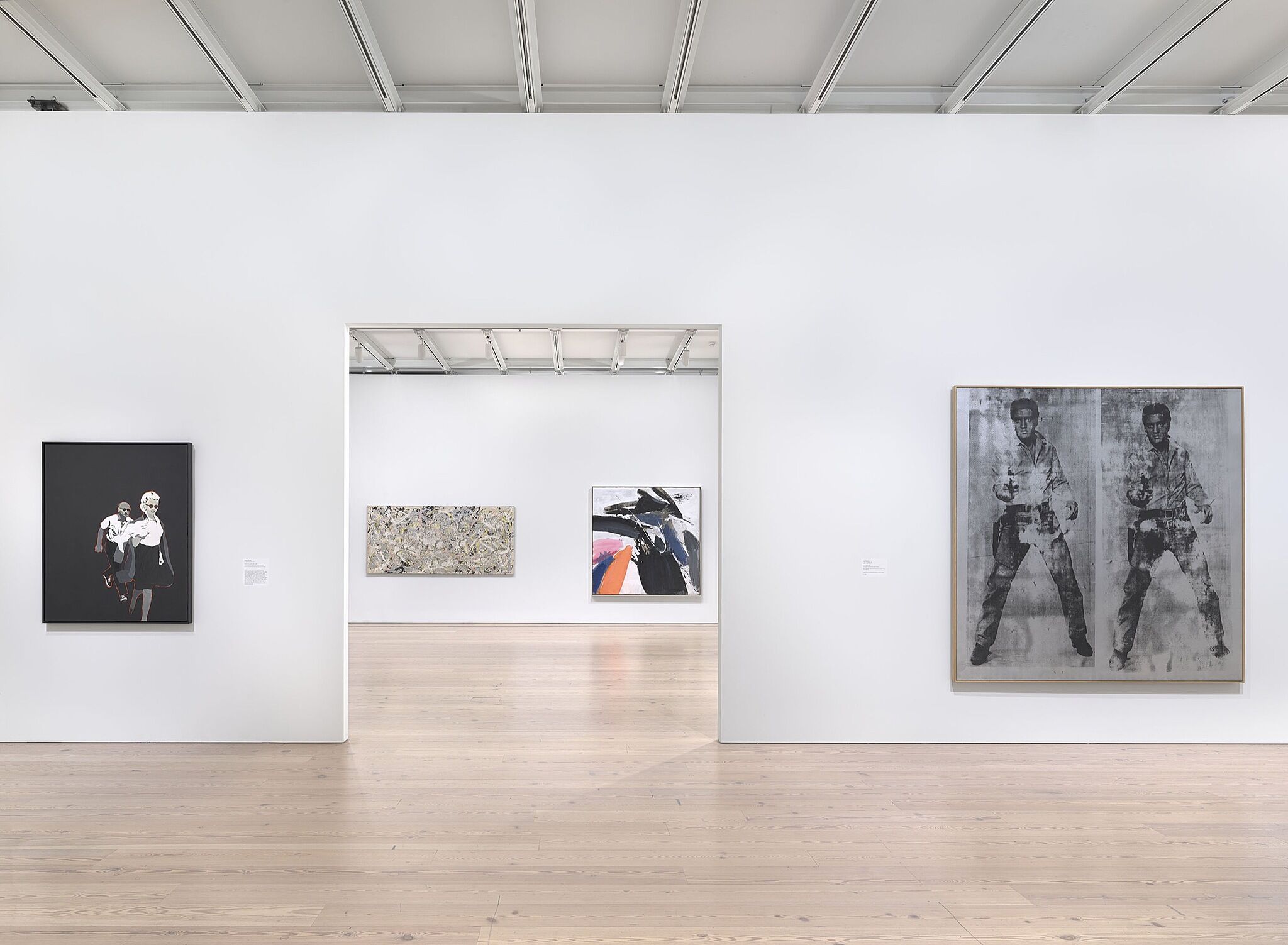The intricate skeins of paint in Number 27, 1950 record Jackson Pollock’s movements as he dripped, poured, and flung ordinary house paint onto a large, unstretched canvas tacked to the floor. There is an extraordinary variety of marks in the painting: black background puddles are covered by lyrical lines of ochre and pink, as well as a calligraphic thicket of white, bronze, and silver paint. Pollock’s gestural marks dissolve all discrete and figurative elements into an all-over composition that evenly covers the entire surface of the canvas. Discussing his unprecedented technique, Pollock remarked: “On the floor I am more at ease. I feel nearer, more a part of the painting, since this way I can walk around it, work from the four sides and literally be in the painting.” His emphasis on spontaneity, and the idea that a work revealed itself to the artist in the process of its creation, helped elevate the act of painting to a level of importance equal to that of the finished picture. This shift, a decisive one in the history of art, would profoundly influence scores of subsequent artists.
Not on view
Date
1950
Classification
Paintings
Medium
Oil, enamel, and aluminum paint on canvas
Dimensions
Overall: 49 1/16 × 106 1/16in. (124.6 × 269.4 cm)
Accession number
53.12
Credit line
Whitney Museum of American Art, New York; purchase
Rights and reproductions
© The Pollock-Krasner Foundation/Artists Rights Society (ARS), New York

